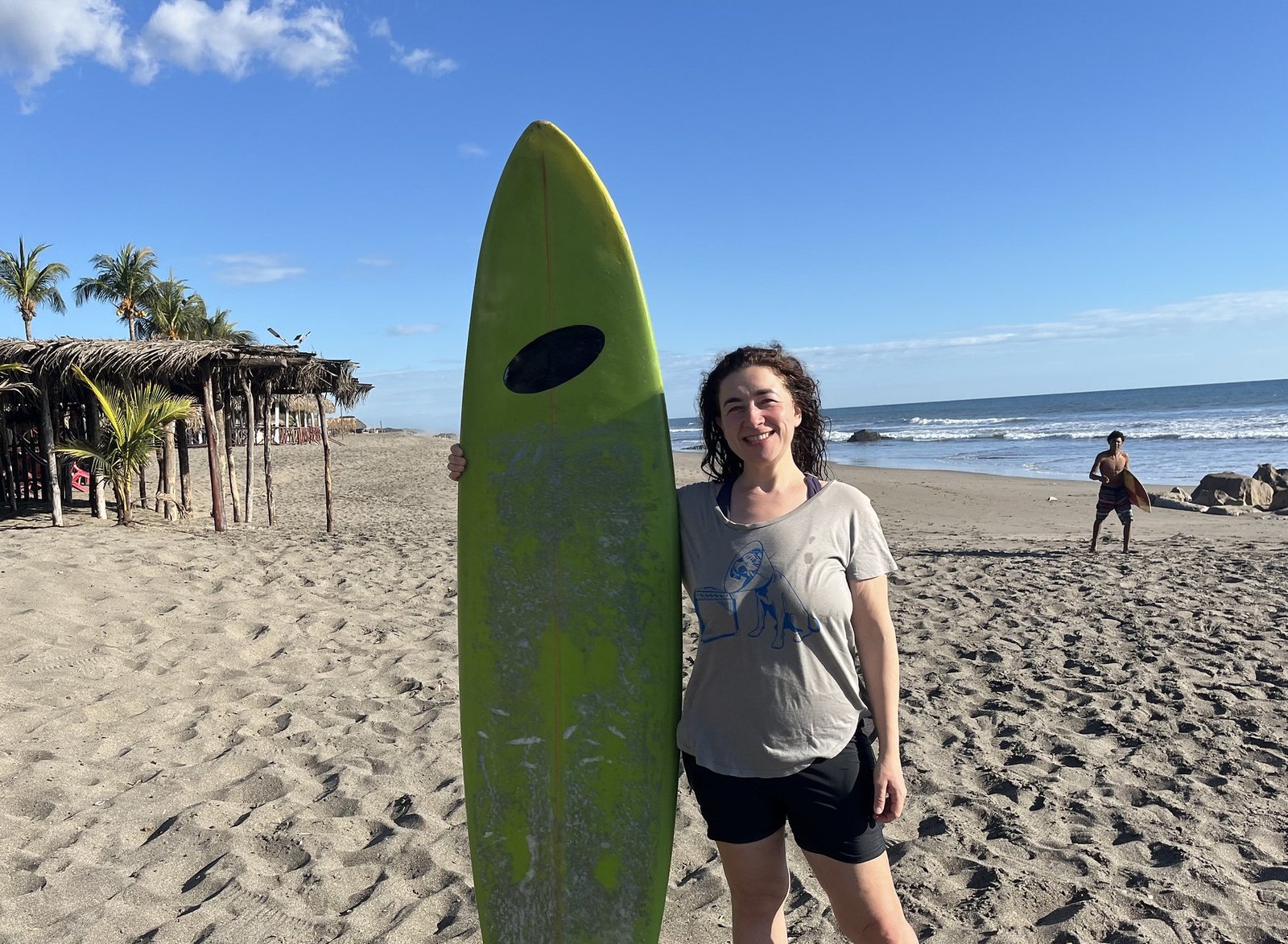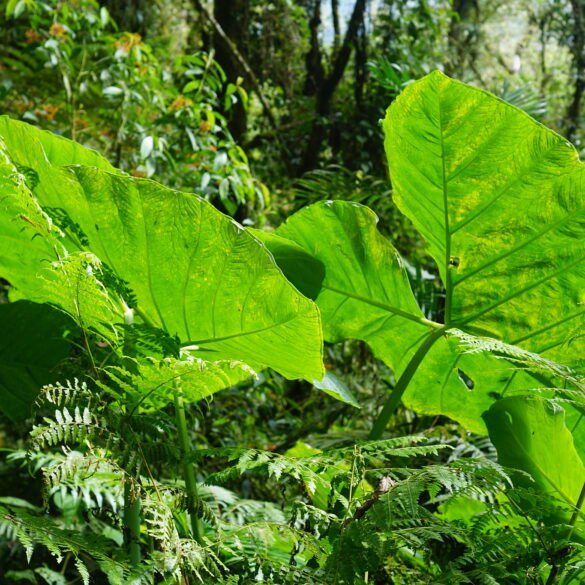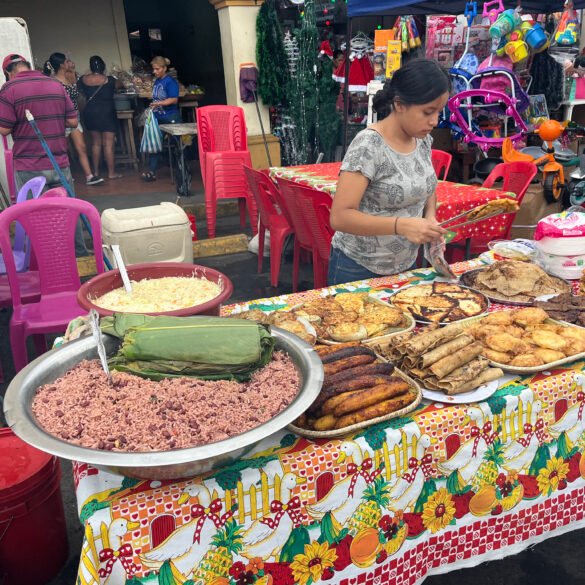A few years ago, while traveling through El Salvador, Victor took a surfing lesson with Yeppi, a local instructor at Las Flores beach. I chose to sit that one out and spend the hour enjoying the sun, the breeze, and filming Victor struggling to ride the waves. After all, I’m incredibly clumsy, uncoordinated, and barely manage to keep my balance on dry land. What chance did I stand in the ocean?
Now we were in Nicaragua, just a few hours south along the same Pacific coastline. Unsurprisingly, this was another prime surfing destination, packed with surf schools. This time, though, we both decided to take a lesson. Victor convinced me that I should try it at least once, and for only $20 a lesson, even if I never stood up on the board, it would still make for a fun afternoon.
In El Salvador, Victor’s hour-long lesson included 20 minutes on the beach, learning how to position his body and properly stand up on the outline of the surfboard drawn in the sand. Then, 40 minutes in the water, trying to apply the newly learned skills to the chaos of crashing waves and gurgling ocean water. Victor kept trying to stand up, only to be knocked off the board within seconds, over and over. Finally, by the end of the lesson, he managed to keep his balance and surf all the way into shallow water, to thunderous applause from the beachgoers (well, it was me and a local family who became strangely invested in Victor’s struggle). I figured our lesson in Nicaragua would be much of the same.
We arrived at the Coco Surf School on Las Penitas beach and were greeted by a father-and-son duo, both named Rafael. The lesson was to be in Spanish, and Victor was translating.
“Show me what you know!” Rafael Sr. said. Victor dropped to the sand, mimed paddling, pushed up, and popped into a surfer’s stance. I followed his lead.
“Push up quicker! And put your legs like this!” Rafael Sr. instructed, demonstrating. I tried again.
“Good!” Rafael said, “Let’s go into the water!”
And just like that, the “lesson” part of the surfing lesson was over. It was time to surf.
I stared at Victor, my mouth agape. Into the water? Already? But I have no idea what to do!
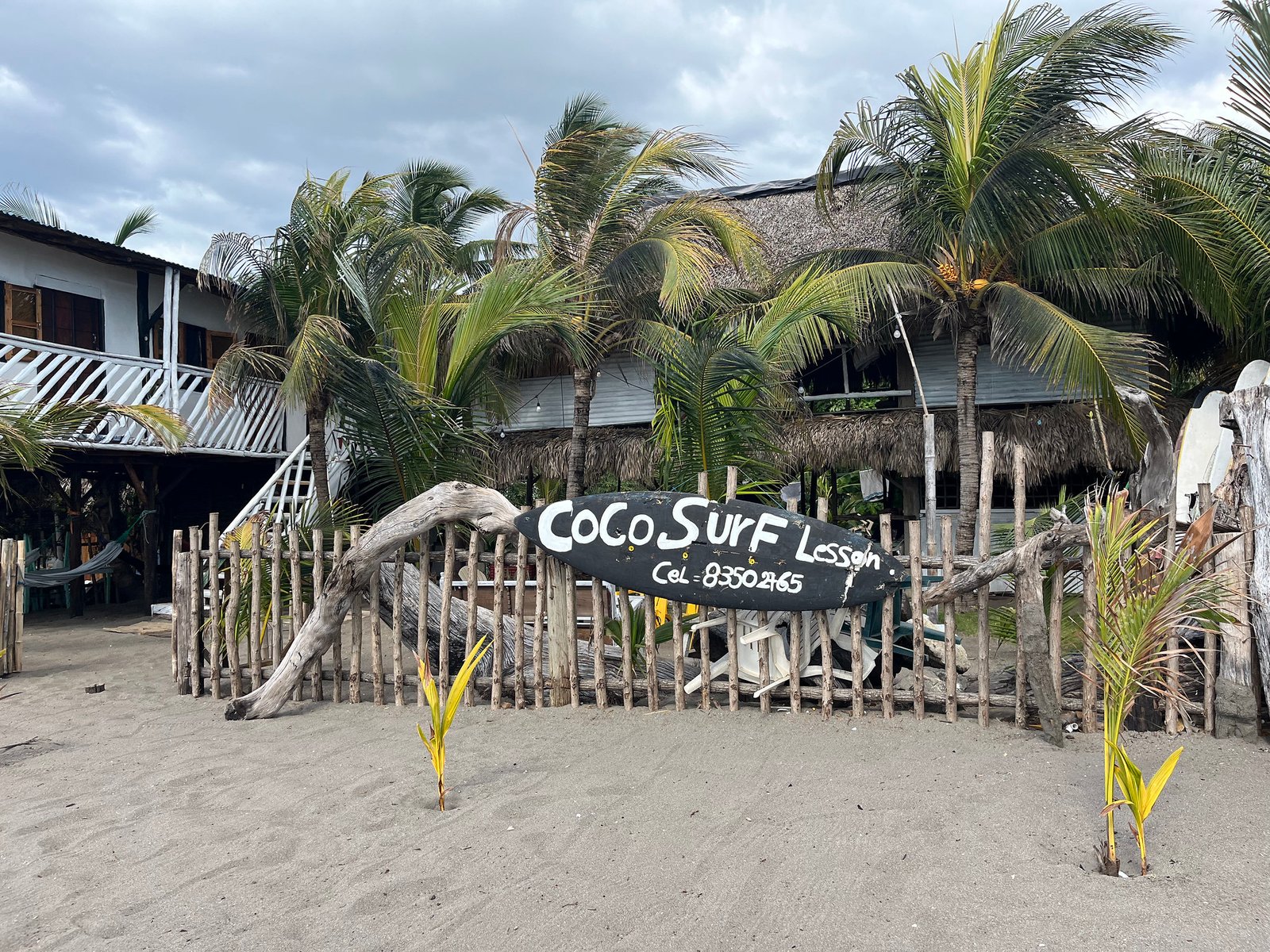
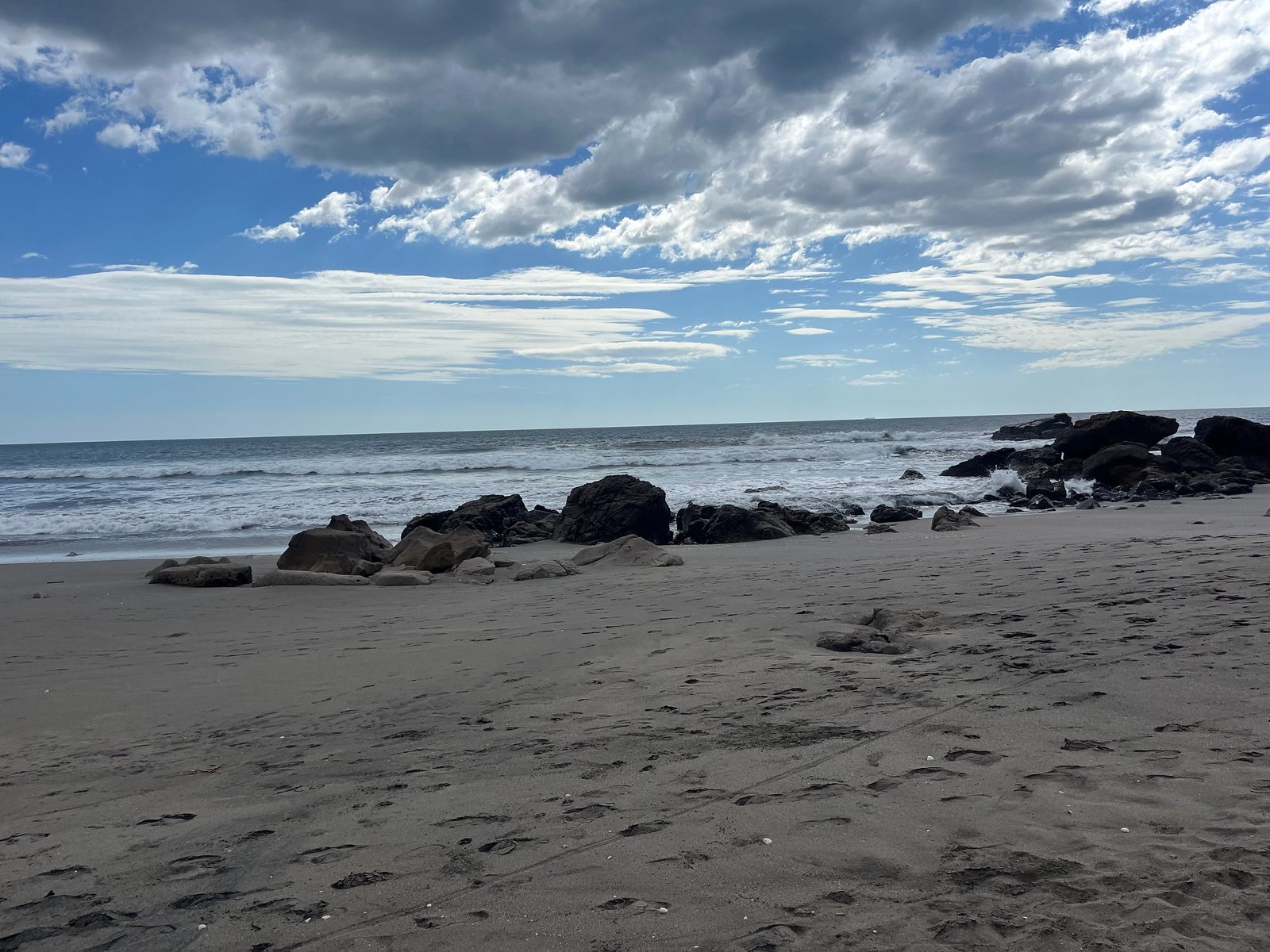
Victor just grinned and shrugged. He and Rafael Jr. were already heading into the surf. Rafael Sr. attached the leash to my ankle, handed me the board, and led me in. My heart was pounding. The first wave hit and ripped the board out of my hands, dragging me backwards. Rafael helped me recover it, get oriented, and hop on. I lay flat, turning my head sideways to avoid taking a wave directly to my face. I couldn’t see the waves coming, and I could barely remember anything from the beach portion of the lesson. Also, I was now separated from Victor, and let’s just say my Spanish rarely helps me on dry land and is certainly not built for ocean survival.
Thankfully, Rafael Sr. knew exactly three words in English. And that’s all we needed.
“This one!” he shouted as a wave approached. That was my cue to paddle hard. I felt the board rise, the wave lift me, and then I was gliding forward.
“Up!” he yelled.
I pushed up with my arms, planted my feet, and stood. Arms out. Knees bent. My board slicing cleanly through the water.
I was surfing.
On my very first try.
“Wow!” I heard Victor shout and immediately fell off the board into the foaming surf.
I still don’t know how I got that lucky. On my next attempt, I barely made it to my knees. After that came multiple tries where I stood up only to fall off instantly. But Rafael kept adjusting my form and correcting my stance. With each try, I got a little closer. A few more times, I rode my board all the way in.
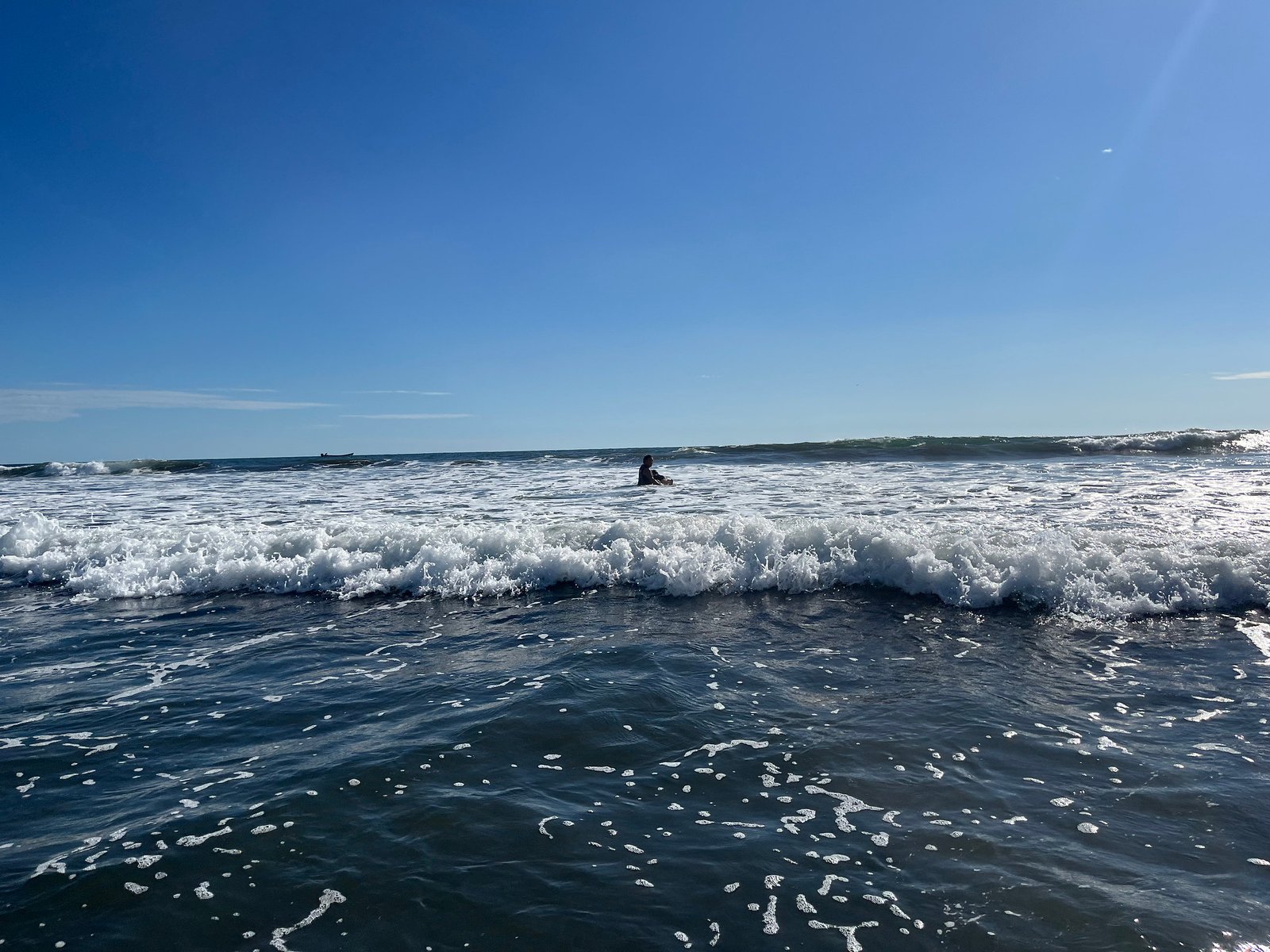
I was elated and started to feel cocky. Was this easy, or was I just a natural-born surfer? Before I could finish that thought, a powerful wave came in and knocked the board directly into my ribs. I gasped in pain and bent over. Rafael, in Spanish, accompanied by frantic hand gestures, explained that I should never hold the board in front of me, only behind me. At this point, I did not need his explanation, for this lesson has been seared into my brain and punched into my body by the ocean itself.
Also, as time went on, it became painfully apparent that I had no idea how to judge a good wave, when to start paddling, and most crucially, when to stand up without Rafael’s assistance. Moreover, I couldn’t even paddle out into the water far enough to catch a wave, without Rafael guiding my board over the bigger waves. I had to admit to myself I was far from becoming even an amateur surfer, but I loved riding the water roller-coaster with Rafael’s assistance.
By the end of the hour, I was exhausted, sore, and completely thrilled with my experience. I didn’t become a surfer that day, but I did something I never thought I could do. I stood up. I rode a wave. I kept my balance for over five seconds.
Victor was beaming. “I can’t believe you got up on the first try!” he said, wrapping me in a towel as if I’d just won a medal. He told me he could barely concentrate on his own lesson because he kept looking over to see how I was doing and was thrilled with my progress. He also had better luck this time around and managed to surf all the way to the shore several times. We took a few pictures by the shore, but instead of posing with the giant beginner surfboards, we chose smaller, slicker professional boards to make ourselves look a bit less like newbies.
We agreed that if we ever have another chance, we will absolutely do this again. But even if I never surf another wave, I’ll always remember that feeling, that first moment I found my balance, the wind on my face, the ocean beneath my feet. The most important lesson I learned was that I should never skip a surfing lesson, for even the clumsiest person on land can occasionally find footing at sea. Also, never hold the surfboard between you and the ocean. The ocean will always win.

